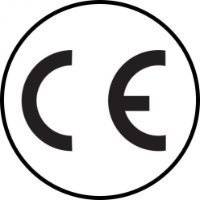Historic Endless Stalemates: Why Peace in Ukraine Remains Elusive
-
Recently Browsing 0 members
- No registered users viewing this page.
-
Topics
-
Popular Contributors
-
Latest posts...
-
66
BBC Faces Backlash Over Use of Term ‘Revert’ in Islam Coverage
When it comes to western media it is more the other way round. Simply untrue, couldn't get more Western Media than the BBC BBC Doc Features Son Of Hamas Leader but Fails to Disclose to Viewers BBC Faces More Serious Accusations of Bias in Gaza Hostage Release Coverage "Controversy Surrounds BBC Arabic's Coverage of Israel-Gaza Conflict" BBC uses account of journalist working for Iran-backed news agency in Gaza deaths article MPs demand inquiry Gaza doctors at centre of harrowing BBC report are Hamas supporters BBC criticized For failing To Disclose Affiliations of Palestinian Journalists Hamas Ties BBC Faces Backlash Over Terminology in Hamas Coverage BBC Chairman Calls For a Thorough Review of Israel-Hamas War Bias BBC Accused of Bias in Israel-Hamas Coverage: Over 1,500 Breaches of Guidelines Jeremy Bowen Defends BBC Amid Allegations of Bias Over Israel-Hamas Coverage New Report from former BBC Director Criticizes Coverage of Israel-Hamas Conflict Whistleblower Alleges Normalized Anti-Semitism at the BBC -
19
Trump’s inner circle weighs push for higher taxes on millionaires
What context would you like? The rich have platoons of tax lawyers working on minimizing the tax they pay, how many does the ordinary wage earner have? -
52
Are you actually using AI yet?
I use Deepseek and Gemini Apps most days, ask them questions, been very useful. Deepseek is my favourite, recently needed to find out about NZ law and processes and it gave excellent well presented answers -
66
BBC Faces Backlash Over Use of Term ‘Revert’ in Islam Coverage
Wrong : A "kid" means a young person , doesn't have to be under 18 -
13
THAILAND LIVE Thailand Live Thursday 24 April 2025
Man Killed as Pickup Truck Plunges Into Ravine in Chiang Rai Picture courtesy of Khoasod. A crash has claimed the life of a man after he lost control of his pickup truck and it veered off a winding mountain road and plunged into a deep ravine. The incident occurred on April 22nd in the Dong Mada area, near Ban Huai San in Mae Suai District, Chiang Rai Province. Full story:https://aseannow.com/topic/1358650-man-killed-as-pickup-truck-plunges-into-ravine-in-chiang-rai/ -
33
Israel Vows to Keep Troops in Security Zones Across Gaza, Lebanon, and Syria
Forgive me Nick, I hate Hamas so much I sometimes just can’t help expressing my contempt for them. How’s this?: I don’t support the terrorist organization Hezbollah or any of the terrorist acts committed by Hezbollah. I do not now nor have I ever supported any terrorist organization, or any terrorist acts by any terrorist organization. You now add another question which you have previously asked and which I have previously answered, I will do you the curtesy of once again answering your repeated question, but ask you commit my answer to memory: The people of Israel have the unequivocal right to live peacefully and in safety, I fully support the State of Israel’s right and duty to defend the territory of Israel and the people of Israel against all aggressors, be they other States, armed agents of other States and/or Terrorists. However, my support of Israel’s right to defend itself (like my support of any State) does does not extend to Israel committing war crimes or anything that might reasonably considered a war crime. I do not support Israel bulldozing homes and farms outwith Israel’s internationally recognized borders, dispossessing and expelling the occupants. This to me meets the definition of both land grab and ethnic cleansing. I do not support Israel seizing land in Lebanon, Gaza or Syria, I consider it all to be a land grab. I do support the right of Israel to bulldoze homes and farms within Israel’s own borders in order to create security zone, though I would not support the Israeli State seizing the land and property of its own citizens without due process and compensation to those effected. I do hope that’s both clear and back to topic.
-
-
Popular in The Pub
-



.thumb.jpeg.d2d19a66404642fd9ff62d6262fd153e.jpeg)

.thumb.png.59631667ecf82c97db947523760c9cdd.png)




Recommended Posts
Create an account or sign in to comment
You need to be a member in order to leave a comment
Create an account
Sign up for a new account in our community. It's easy!
Register a new accountSign in
Already have an account? Sign in here.
Sign In Now